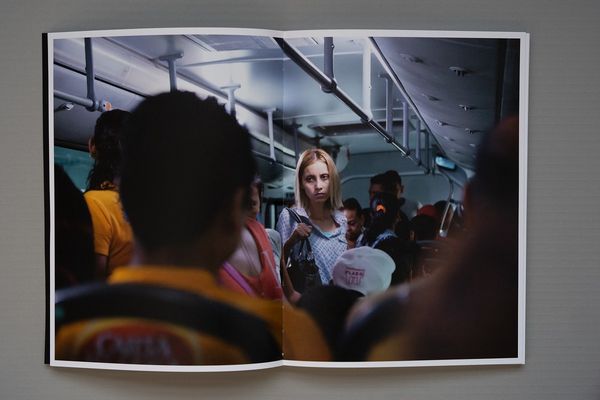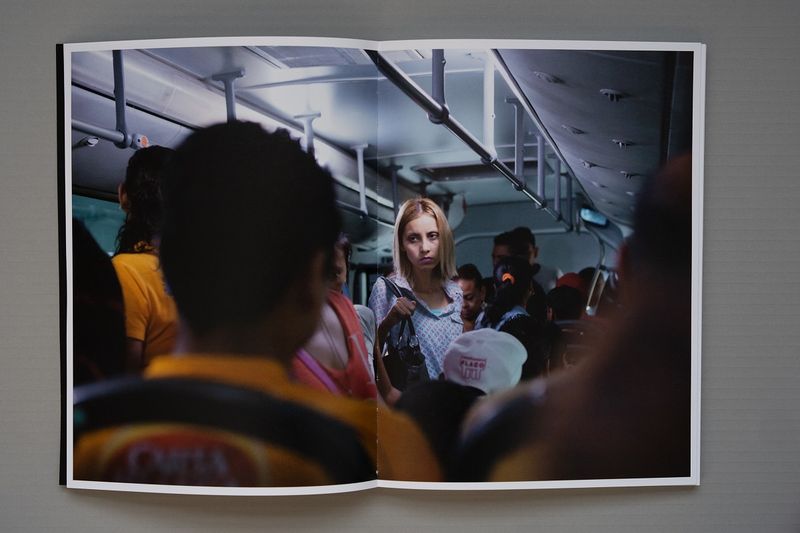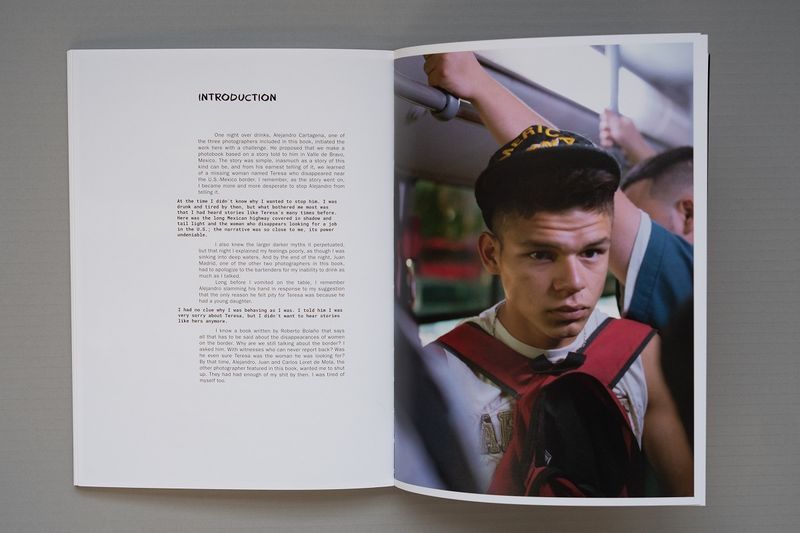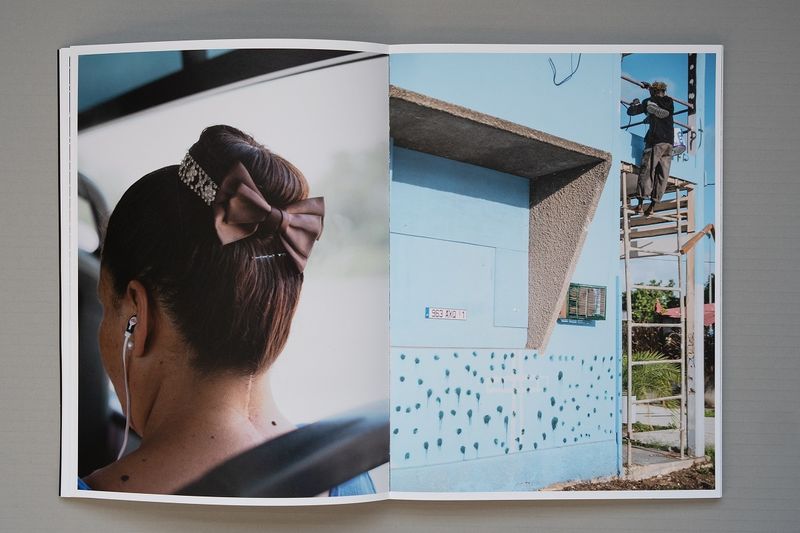The Possible Worlds of Teresa, Last Seen in El Presidio, Texas
-
Published11 Sep 2019
-
Author
Teresa left the town of Valle de Bravo, Mexico on a bus in 2008. She worked as a waitress in Ojinaga for three months and was last seen in El Presidio, Texas in 2011. Los Sumergidos tells the story of where she might have gone, how she might have lived, and what she might have become in a blur of reality, fiction, image and text.
Teresa left the town of Valle de Bravo, Mexico on a bus in 2008. She worked as a waitress in Ojinaga for three months and was last seen in El Presidio, Texas in 2011. Los Sumergidos tells the story of where she might have gone, how she might have lived, and what she might have become in a blur of reality, fiction, image and text.
Los Sumergidos (The Submerged) ends with the salvation of Teresa and the words “For Teresa: 1991 - 2063”. It’s one of two endings. The other ending reads “Teresa Left Presidio, Texas On October 5th, 2011.” But that’s an ending that’s also a start. It’s a starting point that is discussed in the introduction to the book (and the introduction is also at the back of the book); an introduction that provides a rationale for the making of the book. It looks at the mysticism and mythologies that surround the mass of black bodies that have disappeared across the American border, it looks at the ways in which individual identities are smothered by these mythologies, and it tries to reclaim Teresa from this suffocating fate.
The writer, Freddy Martinez (one of five collaborators on the book), asks why the story of Teresa should be told, wonders if the very telling and retelling of these stories is done only to inoculate the listener against the power of the dark histories of the US-Mexico border, to distance the familiarity and guilt of the listener from the netherworld of violence, racism, poverty, trafficking, prostitution, and murder that flicker like a shadow over all those who cross the border, moving from one life into another.
“As I began to imagine Teresa’s story, and write of her memories as my own, I focused on the absent details that connect her to anybody who has lost”, writes Martinez in the introduction. And so he recreates those ‘absent details’ through a second text; a fictionalised journal in which the apparently trivial and mundane are revived, in which her future life is imagined in what Martinez says is a love story. In this journal (from the future) there are stories of imagined relationships, imagined journeys, imagined homes.
And then there are the images that run parallel to this text. Here the dark mythologies begin to kick in.“ Teresa Left Presidio, Texas On October 5th, 2011” reads that line at the back (which seems as good a place to start as any) and so we see the view from the back window of a bus, so we project the name of Teresa onto the unseen passenger whose view we share. And the woman in red with the folded arms? That must be her mother.
There are more buses throughout. A tired girl (is that Teresa? Why must we keep on trying to tag a name to the faces we see?) stands on a bus going to work? Is this what she’s escaping from or escaping to? There are night buses parked on a scrappy roadside, there is an older woman with a scar on her neck. Who’s this? The nearest journal entry is dated 2037? Is it a future Teresa? Is that scar on her neck a clue as to why nobody’s heard from her since 2011? Was some terrible accident involved?
And so we go on. There are red lights which signal a more predictable migration/trafficking trope and so we project multiple lives onto the women that appear throughout. It’s a book of parallel universes then, of fluctuating narratives that are rendered chronologically fluid by the datings of the journal entries.
The smart thing about Los Sumergidos is the way these images of nights, roads, red lights, and tired faces link to the images we already have in our heads. And then we project characters (Teresa, her mother Luisa, her absent father) and narratives onto the people we see and the story takes shape. The introductory text helps with this (the journal text less so) as do the multiple narrative strands. All things are possible in Los Sumergidos for Teresa, it’s just that some things are more possible than others. And that’s what the pictures tell us.
--------------
Los Sumergidos by Carlos Loret de Mola, Alejandro Cartagena, Juan Madrid, Freddy Martinez, and Fernando Gallegos
Artist Published in 2018 // Designed by Roberto Salazar // Printed in Brizzolis Spain
Softcover // 112 pages // 19.5 x 26.5 cm // US$40
--------------
Colin Pantall is a photographer, writer and lecturer based in Bath, England. His latest book, All Quiet on the Home Front, focuses on family, fatherhood and the landscape. Follow him on Twitter and Instagram.






